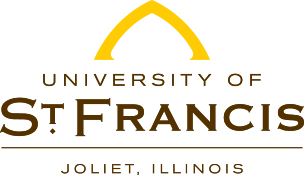1098-T Information for Tax Year 2023
Students need to fill out a lot of forms for college– we know, and we’re trying to make it easier! The first step that a new student will need to do to access a 1098-T will be to create new registration. Click the button for a step-by-step guide.
Frequently Asked Questions
The 1098-T form is used by eligible educational institutions to report information about their students to the IRS as required by the Taxpayer Relief Act of 1997. Eligible educational institutions are required to submit the student’s name, address, taxpayer’s identification number (TIN), enrollment status, amounts pertaining to qualified tuition and related payments, and scholarships and/or grants, taxable or not. A 1098-T form must also be provided to each applicable student.
In January of each year, the University of St Francis mails 1098-T forms, to all students who had qualified tuition and other related educational expenses paid during the previous calendar year.
Yes. Section 6050S of the Internal Revenue Code, as enacted by the Taxpayer Relief Act of 1997, requires institutions to file information returns to assist taxpayers and the IRS in determining eligibility for the Hope and Lifetime Learning education tax credits.
Qualified tuition and related expenses refer to tuition and required fees, such as segregated fees and lab fees, a student must pay to be enrolled at or attend an eligible education institution.
Qualified expenses DO NOT include:
- Amounts paid for any course or education involving sports, games or hobbies unless the course or other education is required as part of the student’s degree program or is taken to acquire or improve job skills.
- Charges and fees for room, board, insurance, transportation, personal, living and other family expenses.
- The cost of books and equipment are generally not qualified expenses because eligible educational institutions usually do not require that the cost of the books or equipment be paid to the institution as a condition of the student’s enrollment or attendance at the institution. However, some campuses may have a mandatory textbook fee or rental program which may be included as a qualified related expense
In previous years, Box 2 reported amounts billed for qualified tuition and related expenses. In 2018, the IRS required reported in Box 1 of amounts paid for qualified tuition and related expense.
This box shows the amount of any tuition and fees reductions in the current calendar year for charges that were billed in a previous calendar year.
The figure in Box 5 includes scholarships, grants and, if applicable, payments made by a third party under formal billing arrangements (i.e. outside scholarships, employer-provided educational assistance (regardless of taxability), military, etc.) which have been administered by the University of St. Francis. If you received other forms of outside scholarships and grants not administered by USF, it is your responsibility to adjust the figure accordingly. Third party payments do not include payments made by your parent or other individuals.
The University of St. Francis does not determine whether your education benefits are being taxed by your employer. As such scholarships and grants are increased by 100% of any employer-provided payments under a formal billing arrangement and it is up to the student to adjust their qualified tuition and related expenses accordingly based on the taxability of their employer benefits.
This box shows the amount of any scholarship, grant, and if applicable, third-party reductions in the current calendar year for aid that was credited in a previous calendar year.
Box 8 will not be checked if you were not enrolled at least a half-time student during any academic period that began in 2023.
The single most important information on the form is your social security number.You must submit a written request to change or correct your SSN by mail or in person to the Registrar’s Office. You may be required to supply a signed, legible copy of your Social Security card or complete Form W-9S (Request for Student’s or Borrower’s Taxpayer Identification Number and Certification). Form W-9S is the official IRS form used to state your SSN. You need only complete Part I of this form when requesting a 1098-T. Enter your SSN in the spaces marked “Taxpayer identification number.”
Generally, foreign students cannot claim a credit. However, some foreign students may be eligible. Review IRS forms, instructions and publications for guidance.
1098-T forms are mailed to the student’s home address as maintained by the University of St. Francis Registrar’s Office.
Your name is a key element on your tax information. Follow your campuses’ process for changing your name so that the University has up to date information.
No. The address shown on Form 1098-T is irrelevant for IRS income tax filing purposes. However, you should update your address in your portal so that the University has up-to-date information.
You are able to log into our processors website directly to download another copy of your tax forms going back five years. https://tra.maximus.com
Information for Tax Year 2023
- The IRS Form 1098-T is an information form filed with the Internal Revenue Service.
- The IRS Form 1098-T that you received reports amounts paid for qualified tuition and related expenses, as well as other related information.
- You, or the person who may claim you as a dependent, may be able to take either the tuition and fees deduction or claim an education credit on Form 1040 or 1040A for the qualified tuition and related expenses that were actually paid during the calendar year.
- There is no need to attach Form 1098-T to your tax return.
- All information and assistance that University of St. Francis can provide to you is contained in this notice.
- There is no IRS requirement that you must claim the tuition and fees deduction or an education credit. Claiming education tax benefits is a voluntary decision for those who may qualify.
Due to federally mandated tax reporting requirements effective for calendar year 2018, USF will now report all payments for qualified tuition and related expenses in Box 1. Please note this is different from prior years where only “billed” information for qualified tuition and related expenses was reported in Box 2.
Amounts Paid for Qualified Tuition and Related Expenses
Box 1 of Form 1098-T reports the qualified tuition and related expenses paid during the calendar year. Qualified tuition and related expenses are sometimes referred to as qualified education expenses, although the terms are not always interchangeable. For purposes of the Form 1098-T provided by University of St. Francis, the following categories of charges are included or not included in qualified tuition and related expense
|
Qualified Tuition and Related Expenses |
|
|
Included |
Not Included |
|
|
Box 2: no longer used.
Box 3: no longer used.
Adjustments Made For a Prior Year
Box 4 of Form 1098-T reports adjustments made to qualified tuition and related expenses reported on a prior year Form 1098-T in Box 2. The amount reported in Box 4 represents a reduction in tuition billed during a prior calendar year. For example, if you were billed for Spring semester classes in December and withdrew from classes in January, Box 4 reports the decrease in billed tuition due to the withdrawal. The amount reported in Box 4 for adjustments to qualified tuition and related expenses may reduce any allowable education credit you may claim for the prior year. See IRS Form 8863 or IRS Publication 970 for more information.
Scholarships or Grants
Box 5 of Form 1098-T reports the total of scholarships or grants administered and processed by the USF Financial Aid Services during the calendar year.
The amount of any scholarships or grants reported for the calendar year and other similar amounts not reported (because they are not administered and processed by USF) may reduce the amount of any allowable tuition and fee deduction or education credit that you are entitled to.
Adjustments to Scholarships or Grants For a Prior Year
Box 6 of Form 1098-T reports adjustments made to scholarships or grants reported on a prior year Form 1098-T in Box 5. The amount reported in Box 6 represents a reduction in scholarships or grants reported for a prior calendar year. The amount reported in Box 6 for adjustments to scholarships or grants may affect the amount of any allowable tuition and fees deduction or education credit you may claim for the prior year. See IRS Form 8863 for how to report these amounts.
Additional Information Reported
There are three additional information boxes that may have a check mark in them.
Box 7 indicates, if checked, that Box 1 includes amounts for an academic period beginning in the next calendar year. For example, if you registered and were billed for the upcoming Spring semester during December, and made payments early, this box will be marked.
Box 8 shows whether you are considered to be carrying at least one-half the normal full-time workload for your course of study at USF for at least one academic period during the calendar year. If this box is marked, you meet one of the requirements for the Hope tax credit. You do not have to meet the workload requirement to qualify for the tuition and fee deduction or the lifetime learning credit.
Box 9 shows whether you are considered to be enrolled in a program leading to a graduate degree, graduate-level certificate, or other recognized graduate-level educational credential. If you are enrolled in a graduate program, you are not eligible for the American Opportunity credit, but you may qualify for the tuition and fee deduction or the lifetime learning credit.
Attaching Form 1098-T to Your Tax Return
You are not required to attach IRS Form 1098-T to your tax return. The IRS Form 1098-T is not like the IRS Form W-2 obtained from your employer, which is required to be attached to the tax return filed with the IRS. The primary purpose of the IRS Form 1098-T is to let you know that USF has provided required information to the IRS to assist them in determining who may be eligible to claim the tuition and fee deduction or an education credit.


